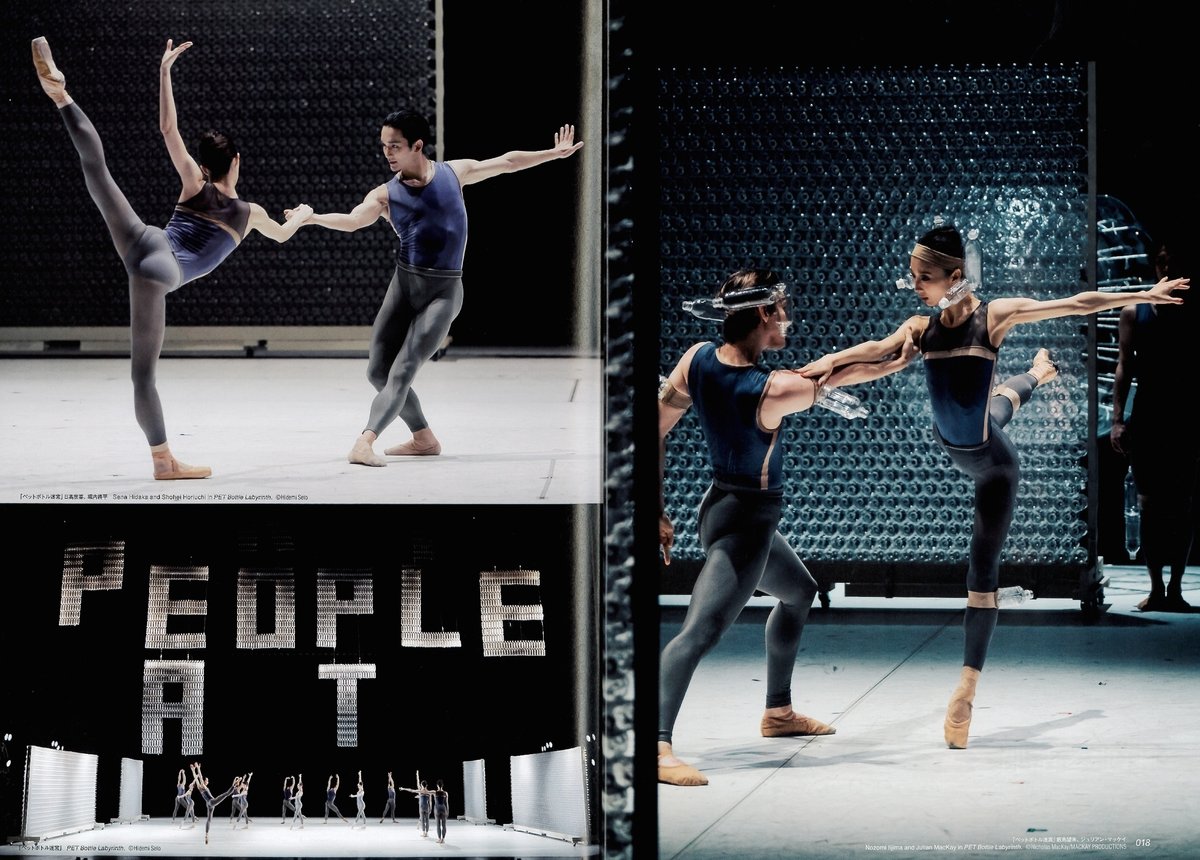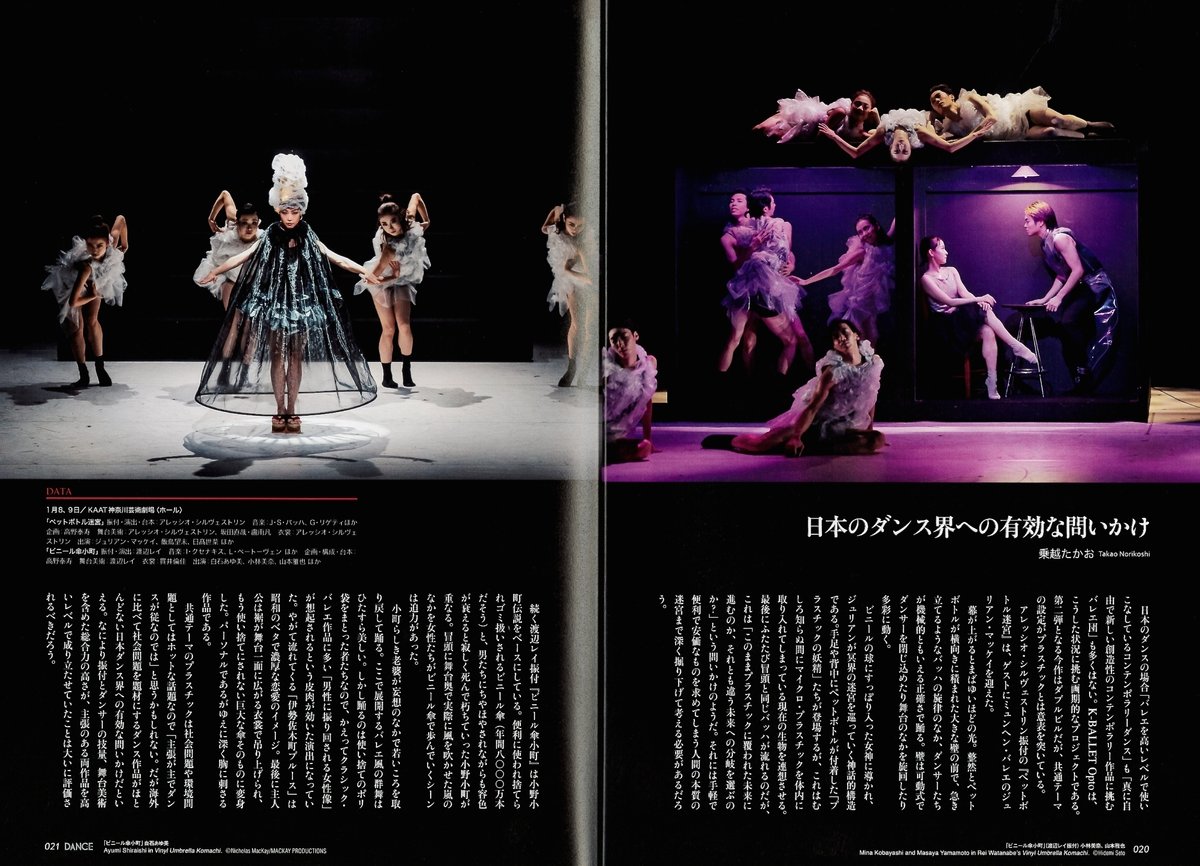
Dance Magazine - April 2023 | A Valid Question for the Japanese Dance World (Takao Norikoshi)



In the Japanese dance world, there are not many "contemporary dance performances that use ballet techniques at a high level" or "ballet companies that challenge contemporary works of truly free and new creativity. K-BALLET Opto is a groundbreaking project that challenges this situation. This second project is a double bill, and the common theme is, unexpectedly, plastic.
Choreographed by Alessio Silvestrin, "Plastic Bottle Labyrinth" featured guest Julian McKay of the Munich Ballet.
When the curtain rose, there was a dazzling light. The dancers danced with almost mechanical precision to a stirring Bach's melodies in front of large walls of plastic bottles neatly stacked side by side. The walls are movable, trapping the dancers in them or allowing them to swivel around the stage in a variety of ways.
The mythological structure of the piece is that Julien is led through the labyrinth of the underworld by a goddess who is completely enclosed in a plastic sphere. Plastic fairies" with plastic bottles attached to their arms, legs, and backs appear on the stage, which is rather reminiscent of the creatures of today that have unwittingly introduced microplastics into their bodies. At the end of the piece, the same piece of Bach as at the beginning resumes, which seems to ask the question, "Will we continue on into a future covered in plastic, or will we choose to branch out into a different future?" To answer this question, it will be necessary to delve deeper into the labyrinth of human nature, which includes the desire for things that are easy, convenient, and inexpensive.
The next work, "Vinyl Umbrella Komachi," choreographed by Rei Watanabe, is based on the Ono no Komachi legend. The story is about Ono no Komachi, a woman who was pampered by men but died a lonely death and decayed when she lost her color. The scene at the beginning of the piece, where the women walk with plastic umbrellas through a storm that actually blows wind at the back of the stage, was powerful.
An old woman who looked like Komachi danced in her delusion, regaining her youth. The ballet-like group dance that develops here is simply beautiful. However, since the dancers were dressed in disposable plastic bags, the irony of this performance was that it reminded us of the image of women being pushed around by men, which is common in classical ballet pieces. The song "Isezakicho Blues" eventually came on, evoking the image of a rich and strong Showa-era love affair. At the end, the main character was suspended by a costume whose hem spread across the stage, transforming her into a giant umbrella that was no longer disposable. The work is deeply moving because of its personal nature.
Since the common theme of plastic is a hot topic as a social and environmental issue, one might think that "the argument is the main thing and the dance is the secondary thing." However, this is a valid question to the Japanese dance world, which has few dance works on social issues compared to other countries. Above all, the high overall quality of the choreographies and the dancers' skills, as well as the stage design, should be highly appreciated for making both assertive works possible at a high level.
初演実現のためサポートいただけましたら幸いです!
